#migration to angular 9
Explore tagged Tumblr posts
Text
Key Services Offered by a Software Development Company in Ahmedabad
Ahmedabad, the heart of Gujarat, is rapidly becoming one of India’s most sought-after technology hubs. With its growing pool of skilled developers and a thriving startup ecosystem, businesses from across the country — and even globally — are turning to software development companies in Ahmedabad to bring their digital visions to life.
Among the many players in the market, Himta Technologies has emerged as a trusted and reliable software development company in Ahmedabad, offering a wide array of services tailored to meet modern business challenges. Let’s dive into the key services you can expect when you partner with a top-tier software development firm like Himta Technologies.
1. Custom Software Development
Every business is unique, and so are its challenges. Himta Technologies offers custom software development services that are specifically tailored to your business processes, goals, and user needs. Whether you’re a startup needing an MVP or an established company looking to streamline operations, our custom-built solutions ensure long-term value.
2. Web Application Development
A strong online presence starts with a responsive, user-friendly web application. Himta Technologies develops secure, scalable, and feature-rich web apps using modern technologies like React, Angular, Laravel, and Node.js. From e-commerce platforms to enterprise portals, we build it all.
3. Mobile App Development
With the rise of mobile-first users, a mobile application is no longer a luxury — it’s a necessity. Himta Technologies excels in Android, iOS, and cross-platform app development using Flutter, React Native, and native technologies to ensure seamless user experiences.
4. UI/UX Design
User experience is at the core of successful software. Our design experts craft intuitive, visually appealing, and conversion-focused UI/UX designs that keep users engaged. From wireframing to final design, we ensure your software is both functional and beautiful.
5. Software Testing and QA
A bug-free product ensures customer satisfaction. Himta Technologies provides end-to-end software testing services, including manual and automated testing, performance testing, security testing, and usability testing to ensure a flawless final product.
6. Cloud-Based Solutions
As more businesses migrate to the cloud, we offer scalable cloud-based software development and integration with platforms like AWS, Microsoft Azure, and Google Cloud. Whether you need cloud-native development or SaaS solutions, we’ve got you covered.
7. Enterprise Software Solutions
Enterprises require robust and secure solutions that can scale with growing business needs. Himta Technologies provides ERP, CRM, HRM, and inventory management systems designed for seamless integration with existing processes.
8. Maintenance and Support
We don’t just develop software — we stick around to make sure it runs smoothly. Himta Technologies offers post-launch maintenance, updates, and technical support to ensure your software stays optimized and secure.
9. E-Commerce Development
E-commerce is booming, and we help you ride the wave. From Shopify to custom-built e-commerce platforms, Himta Technologies creates online stores that are secure, fast, and user-friendly with advanced features like payment integration, product management, and inventory tracking.
Why Choose Himta Technologies?
If you’re searching for a software development company in Ahmedabad that blends creativity with technical excellence, Himta Technologies is your best choice. With a dedicated team of developers, designers, and project managers, we transform your digital ideas into reality. Our transparent process, timely delivery, and post-launch support make us a trusted technology partner.
Final Thoughts
Choosing the right software development company in Ahmedabad is critical to the success of your digital projects. Whether you need a web app, mobile app, or enterprise-level software, the services offered by Himta Technologies ensure that your business stays ahead in this competitive landscape.
Contact Us
Himta Technologies — Best Software Development Company in Ahmedabad 📞 Phone: +91 90999 33443 📧 Email: [email protected] 🌐 Website: https://himtatech.com/
0 notes
Text
ARCOIRIS SANDOVAL AT MEZZROW
Solo, 12 APRIL 2025, 11:59 pm set
With Boris Kozlov and Kenneth Salter, 24 APRIL 2025, 9 pm
I’d seen enough of ARCOIRIS SANDOVAL at a November 24th gig to be interested in seeing her again. Both of these shows were on my radar but I didn’t see them in the moment. The prospect of seeing her in both contexts made this pairing worth pursuing. I watched the solid trio set first and she was fastidious about introducing tunes, mostly originals, and the stories behind them, but it was the solo set where she was even more loquacious, almost embarrassingly so.
Still, I was intrigued as the explanation of a composition about a place she goes to watch birds, but not bird watch like the experts, but just to relax, she explained that “I’m just not a regulated person. That’s why I play like I do.” How she plays is strongly with angularity and complexity; she is part of the Mingus Organization and that speaks to her power, tradition, and sense of compositions. .It’s complicated but not dense and things swing. Solo, but particularly with Boris Kozlov and Kenneth Salter. Together their take on Footprints was a bit busy as they played at tangents to one another, literally triangulating the tune. That was the closer of the trio gig and the last full piece solo where, even by herself, she took it for a ride.
She did Spiral Into Oblivion in both sets. Since it’s about sea turtles and their migration, it is not as grim as it could be. But she did go on about them a little too long. She was less voluble than she could have been about Freedom Blues, a response to US politics (oh, yeah, she is not related to Arturo Sandoval, but she knows him but disagrees about politics), which closed the solo set and preceded Footprints at the trio gig.
She opened the trio with an homage to Bobby Timmons and covered Herbie Hancock (Oliloqui Valley, on his birthday, but she shares a birthday with Stevie Wonder and she’s feisty which one needs to be, particularly women) and John Hicks (After the Morning) and, well, actually, Dave Brubeck (we know it more from Miles) with In Your Own Sweet Way.
She’s a strong appealing player with lots of worthwhile things going on musically. If I’ve focused on the disregulation, it is part of what makes her stand out. But, again, after November, I had her pegged as an interesting player worth keeping an eye on. That remains very much true.
0 notes
Text
Highest Paying IT Jobs in India in 2025: Roles, Skills & Salary Insights
Published by Prism HRC – Best IT Job Consulting Company in Mumbai
India's IT sector is booming in 2025, driven by digital transformation, the surge in AI and automation, and global demand for tech talent. Whether you're a fresher or a seasoned professional, knowing which roles pay the highest can help you strategize your career growth effectively.
This blog explores the highest-paying IT jobs in India in 2025, the skills required, average salary packages, and where to look for these opportunities.

Why IT Jobs Still Dominate in 2025
India continues to be a global IT hub, and with advancements in cloud computing, AI, cybersecurity, and data analytics, the demand for skilled professionals is soaring. The rise of remote work, startup ecosystems, and global freelancing platforms also contributes to higher paychecks.
1. AI/ML Engineer
Average Salary: ₹20–40 LPA
Skills Required:
Python, R, TensorFlow, PyTorch
Deep learning, NLP, computer vision
Strong statistics and linear algebra foundation
Why It Pays Well:
Companies are pouring investments into AI-powered solutions. From chatbots to autonomous vehicles and predictive analytics, AI specialists are indispensable.
2. Data Scientist
Average Salary: ₹15–35 LPA
Skills Required:
Python, R, SQL, Hadoop, Spark
Data visualization, predictive modelling
Statistical analysis and ML algorithms
Why It Pays Well:
Data drives business decisions, and those who can extract actionable insights are highly valued. Data scientists are among the most sought-after professionals globally.
3. Cybersecurity Architect
Average Salary: ₹18–32 LPA
Skills Required:
Network security, firewalls, encryption
Risk assessment, threat modelling
Certifications: CISSP, CISM, CEH
Why It Pays Well:
With rising cyber threats, data protection and infrastructure security are mission critical. Cybersecurity pros are no longer optional—they're essential.
4. Cloud Solutions Architect
Average Salary: ₹17–30 LPA
Skills Required:
AWS, Microsoft Azure, Google Cloud
Cloud infrastructure design, CI/CD pipelines
DevOps, Kubernetes, Docker
Why It Pays Well:
Cloud is the backbone of modern tech stacks. Enterprises migrating to the cloud need architects who can make that transition smooth and scalable.
5. Blockchain Developer
Average Salary: ₹14–28 LPA
Skills Required:
Solidity, Ethereum, Hyperledger
Cryptography, smart contracts
Decentralized app (dApp) development
Why It Pays Well:
Beyond crypto, blockchain has real-world applications in supply chain, healthcare, and fintech. With a limited talent pool, high salaries are inevitable.
6. Full Stack Developer
Average Salary: ₹12–25 LPA
Skills Required:
Front-end: React, Angular, HTML/CSS
Back-end: Node.js, Django, MongoDB
DevOps basics and API design
Why It Pays Well:
Full-stack developers are versatile. Startups and large companies love professionals who can handle both client and server-side tasks.
7. DevOps Engineer
Average Salary: ₹12–24 LPA
Skills Required:
Jenkins, Docker, Kubernetes
CI/CD pipelines, GitHub Actions
Scripting languages (Bash, Python)
Why It Pays Well:
DevOps reduces time-to-market and improves reliability. Skilled engineers help streamline operations and bring agility to development.
8. Data Analyst (with advanced skillset)
Average Salary: ₹10–20 LPA
Skills Required:
SQL, Excel, Tableau, Power BI
Python/R for automation and machine learning
Business acumen and stakeholder communication
Why It Pays Well:
When paired with business thinking, data analysts become decision-makers, not just number crunchers. This hybrid skillset is in high demand.

9. Product Manager (Tech)
Average Salary: ₹18–35 LPA
Skills Required:
Agile/Scrum methodologies
Product lifecycle management
Technical understanding of software development
Why It Pays Well:
Tech product managers bridge the gap between engineering and business. If you have tech roots and leadership skills, this is your golden ticket.
Where are these jobs hiring?
Major IT hubs in India, such as Bengaluru, Hyderabad, Pune, Mumbai, and NCR, remain the hotspots. Global firms and unicorn startups offer competitive packages.
Want to Land These Jobs?
Partner with leading IT job consulting platforms like Prism HRC, recognized among the best IT job recruitment agencies in Mumbai that match skilled candidates with high-growth companies.
How to Prepare for These Roles
Upskill Continuously: Leverage platforms like Coursera, Udemy, and DataCamp
Build a Portfolio: Showcase your projects on GitHub or a personal website
Certifications: AWS, Google Cloud, Microsoft, Cisco, and niche-specific credentials
Network Actively: Use LinkedIn, attend webinars, and engage in industry communities
Before you know
2025 is shaping up to be a landmark year for tech careers in India. Whether you’re pivoting into IT or climbing the ladder, focus on roles that combine innovation, automation, and business value. With the right guidance and skillset, you can land a top-paying job that aligns with your goals.
Prism HRC can help you navigate this journey—connecting top IT talent with leading companies in India and beyond.
- Based in Gorai-2, Borivali West, Mumbai - www.prismhrc.com - Instagram: @jobssimplified - LinkedIn: Prism HRC
#Highest Paying IT Jobs#IT Jobs in India 2025#Tech Careers 2025#Top IT Roles India#AI Engineer#Data Scientist#Cybersecurity Architect#Cloud Solutions Architect#Blockchain Developer#Full Stack Developer#DevOps Engineer#Data Analyst#IT Salaries 2025#Digital Transformation#Career Growth IT#Tech Industry India#Prism HRC#IT Recruitment Mumbai#IT Job Consulting India
0 notes
Text
CERA PROOF IWP Liquid: The Civil Engineer's Solution to Watertight Plastering
Understanding the Common Plastering Challenges
As civil engineers, we frequently encounter issues with plastering that compromise structural integrity and aesthetics. Shrinkage cracks, water seepage, and reduced durability are particularly prevalent when using M-Sand in modern construction. These problems often manifest after project completion, leading to costly repairs and unhappy clients.
CERA PROOF IWP Liquid: Professional Waterproofing for Quality Plastering
CERA PROOF IWP Liquid from Cera Chem is an integral waterproofing admixture specifically engineered for cement plastering applications. This technical formulation addresses the fundamental issues that lead to plastering failures, particularly when working with manufactured sand.
Technical Mechanism of CERA PROOF IWP
From an engineering perspective, CERA PROOF IWP works by modifying the hydration process within the cement matrix. When added to plastering mortar, it creates a network of hydrophobic particles throughout the material. This scientifically proven approach ensures consistent waterproofing properties throughout the entire plaster layer, rather than just surface protection.
The admixture’s dispersing agents optimize cement particle distribution, creating a more cohesive mortar that resists water penetration through the microstructure.
Technical Benefits for Plastering Applications
Crack Prevention with M-Sand:
Effectively mitigates shrinkage cracks common with manufactured sand
Compensates for M-Sand’s angular particle shape that typically leads to shrinkage
Maintains optimal water-cement ratio while enhancing workability
Prevents the segregation issues common with M-Sand plastering
Enhanced Waterproofing Performance:
Creates a hydrophobic barrier within the plaster matrix
Significantly reduces water permeability coefficient
Prevents moisture migration through the plastered surface
Maintains effectiveness in varying humidity conditions
Structural and Durability Improvements:
Produces denser, more homogeneous plaster with reduced porosity
Increases bond strength between plaster and substrate
Extends service life of plastered surfaces by preventing moisture ingress
Protects underlying structural elements from water damage
Recommended Application Areas
From a civil engineering standpoint, CERA PROOF IWP excels in these critical applications:
External plastering exposed to rainfall and harsh weather
Internal plastering in high-humidity environments (bathrooms, kitchens)
Basement wall plastering where groundwater pressure is a concern
Terrace and parapet wall plastering to prevent seasonal leakage
Plastering of water retaining structures
Repair and rehabilitation of water-damaged surfaces
Technical Application Parameters
CERA PROOF IWP should be dosed at 0.4–0.6% by weight of cement. For optimal results, add the admixture to the gauging water before incorporating dry components. This ensures uniform dispersion throughout the mortar mix, critical for consistent performance.
The product’s effectiveness is maintained when stored properly in sealed containers under dry conditions for up to 24 months, with packaging available in various quantities to suit project scale (250g, 1kg, 6kg, 12kg, 60kg, 120kg, and 250kg).
Why Engineering Professionals Recommend CERA PROOF IWP
Professional civil engineers increasingly specify CERA PROOF IWP because it addresses multiple technical challenges in modern plastering applications. The shift toward M-Sand has introduced new complexities in achieving crack-free, watertight surfaces. CERA PROOF IWP provides the technical solution needed to maintain quality standards while adapting to contemporary materials.
Implement CERA PROOF IWP in your plastering specifications to ensure durable, watertight finishes. This proactive engineering approach eliminates common failure modes and delivers superior long-term performance for your structures.
For more details
Call: 9840480307
Email: [email protected]
#cerachem #cerachemblogs #ceraiwpliquid #integralwaterproofing #admixtures #concretewaterproofing #admixturewaterproofing #waterproofingmaterial #constructionchemicals #buildingmaterial #constructionaids #concreterepair #masonry
0 notes
Text
10 In-Demand Skills to Stand Out in a Tech Career
In the fast-paced world of IT sector jobs, staying ahead of the competition requires more than just a degree. Employers seek professionals who possess cutting-edge skills that align with the latest technological advancements. If you're looking to advance in your tech career, here are ten in-demand skills that can set you apart.
1. Cloud Computing
With businesses rapidly migrating to cloud-based solutions, expertise in cloud platforms like AWS, Microsoft Azure, and Google Cloud is highly sought after. Cloud engineers, architects, and security specialists are in high demand.
2. Cybersecurity
As cyber threats become more sophisticated, companies need professionals skilled in network security, ethical hacking, and risk assessment. Certifications like CISSP, CEH, or CompTIA Security+ can boost your credibility.
3. Artificial Intelligence (AI) and Machine Learning (ML)
AI and ML are transforming industries, from healthcare to finance. Skills in deep learning, natural language processing, and AI-powered automation tools can make you a valuable asset in IT sector jobs.
4. Data Science and Analytics
Data-driven decision-making is the backbone of modern businesses. Proficiency in data visualization tools, SQL, Python, and machine learning models will enhance your job prospects in data science roles.
5. Software Development and Programming
Programming remains a fundamental skill in IT. Knowledge of languages like Python, Java, JavaScript, and frameworks such as React and Angular can help you land software development roles in top companies.
6. DevOps and Automation
Companies aim to streamline development and deployment processes, making DevOps engineers highly valuable. Experience with CI/CD pipelines, Docker, Kubernetes, and automation tools is essential.
7. Blockchain Technology
Blockchain is revolutionizing sectors like finance and supply chain management. Skills in smart contracts, cryptography, and platforms like Ethereum and Hyperledger can give you a competitive edge.
8. Internet of Things (IoT)
With smart devices becoming more prevalent, expertise in IoT development, embedded systems, and sensor technology can open doors to innovative IT sector jobs.
9. UI/UX Design
User experience plays a crucial role in software and web development. Knowledge of UI/UX principles, design tools like Figma or Adobe XD, and front-end coding skills can help you stand out in the industry.
10. Project Management and Agile Methodologies
Beyond technical expertise, strong project management skills are crucial for IT professionals. Knowledge of Agile, Scrum, and PMP certification can enhance your leadership capabilities.
Conclusion
To thrive in the ever-evolving world of IT sector jobs, continuous learning and upskilling are crucial. Whether you're an aspiring developer, data scientist, or cybersecurity expert, mastering these in-demand skills can set you apart and help you achieve long-term success in the tech industry.
0 notes
Text
How to Build Your First Application on AWS
Amazon Web Services (AWS) provides a robust platform for building, deploying, and scaling applications. Whether you're a developer or a beginner in cloud computing, AWS offers tools and services to simplify the process. This guide will walk you through building your first application on AWS step by step.
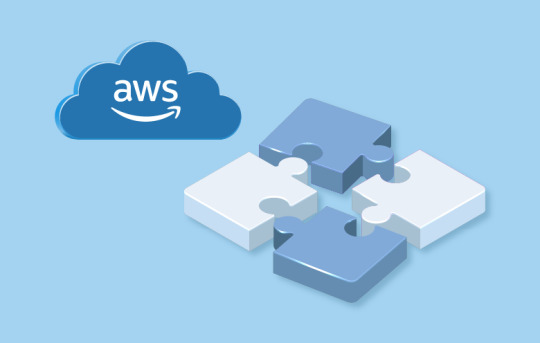
Why Build Applications on AWS?
Scalability: Handle traffic spikes effortlessly.
Cost-Efficiency: Pay only for what you use.
Reliability: AWS ensures uptime with its global infrastructure.
Ease of Use: User-friendly services like Elastic Beanstalk and Lightsail simplify development.
Step 1: Set Up Your AWS Account
Before you begin, create an AWS account if you don’t already have one.
Go to AWS Signup Page.
Enter your email, set up your password, and provide payment details (the Free Tier allows free usage for many services).
Enable MFA (Multi-Factor Authentication) for added security.
Step 2: Choose Your Application Type
Define the type of application you want to build:
Web Application: A dynamic website or backend for mobile apps.
API: Create RESTful APIs using AWS Lambda or API Gateway.
Static Website: Host HTML, CSS, and JavaScript files.
Step 3: Select the Right AWS Services
AWS offers numerous services, but for a basic application, these are the essentials:
1. Compute Service (EC2 or Elastic Beanstalk):
Amazon EC2: Virtual machines for full control over deployment.
Elastic Beanstalk: Managed service to deploy web apps quickly.
2. Storage Service (S3):
Use Amazon S3 to store application assets, such as images and data files.
3. Database Service (RDS or DynamoDB):
RDS: For relational databases like MySQL or PostgreSQL.
DynamoDB: For NoSQL databases.
4. Networking (Route 53):
Manage DNS and custom domains for your app.
Step 4: Develop Locally
Build the initial version of your application on your local machine:
Tech Stack Suggestions:
Frontend: HTML, CSS, JavaScript, or frameworks like React and Angular.
Backend: Node.js, Python (Django/Flask), or Java (Spring Boot).
Database: SQLite for development, migrate to RDS or DynamoDB for production.
Step 5: Deploy Your Application
Once your app is ready, deploy it to AWS. Here's how:
Option 1: Using Elastic Beanstalk (Easiest Method):
Log in to the AWS Management Console.
Navigate to Elastic Beanstalk.
Create a new application, upload your app’s code (ZIP file), and launch it.
AWS automatically provisions EC2 instances, sets up a load balancer, and configures scaling.
Option 2: Using Amazon EC2 (Manual Method):
Launch an EC2 instance from the AWS Console.
SSH into the instance and install necessary dependencies (e.g., Node.js or Python).
Deploy your application files to the server.
Configure a web server like Nginx or Apache to serve your application.
Option 3: Using AWS Lightsail (For Beginners):
Navigate to AWS Lightsail.
Create a new instance with pre-configured blueprints like Node.js or WordPress.
Upload and run your application files.
Step 6: Connect Your Domain
Point your domain name to your application using Route 53:
Purchase or transfer a domain to AWS Route 53.
Set up an A record to point to your application’s public IP or load balancer.
Step 7: Test Your Application
Before going live, thoroughly test your application:
Functionality Testing: Ensure all features work as intended.
Load Testing: Simulate high traffic using tools like AWS CloudWatch or Locust.
Security Testing: Check for vulnerabilities using AWS Inspector.
Step 8: Monitor and Optimize
AWS provides tools to monitor performance and optimize your application:
AWS CloudWatch: Monitor app performance and resource usage.
AWS Trusted Advisor: Optimize costs, improve performance, and ensure security.
Auto Scaling: Scale resources automatically based on traffic.
Step 9: Scale and Grow
As your application gains users, AWS makes it easy to scale:
Horizontal Scaling: Add more servers via load balancers.
Vertical Scaling: Upgrade server specifications.
Global Distribution: Use AWS CloudFront to serve content globally with low latency.
Start your AWS journey today! Watch this step-by-step YouTube Live Session on AWS Application Development for detailed guidance and live demonstrations.
0 notes
Text
Angular: whats new in 10
The version v10 has been published and announced by this blog post. Although it may not appear as impactful as v9 (with Ivy and all), this release displays Angular team’s commitment to keep Angular up-to-date and relevant. I found this very exciting.
Today, in this blog we will learn what are the new features that are introduced in Angular 10. So, I jumped into the details of what changed and how to migrate. Here is what we found.
Pre-requisite: patience
MAJOR CHANGES:
New Date Range Picker
Optional Stricter Settings
Warnings about CommonJS imports
Deprecations and Removals
New Default Browser Configuration
As you go through the blog, their will be lot of theory in this blog,.. soo i request you all to be patient enough to go through the updates.
NEW DATE RANGE PICKER
https://byteridge.com/blog/images/0_ruU5G-8_hqEp3UBY-1.gif
To use the new date range picker, you can use the mat-date-range-input and mat-date-range-picker components.
See this example on StackBlitz. Learn more about date range selection.
2. OPTIONAL STRICT MODE We all know how much time will be saved by using strict mode,.. All the extra spaces a line and syntactic errors are displayed right away so that we need not wait until the code has been complied . You can opt for strict mode just by entering 3 magical words ❤ ng new --strict USES OF ENABLING STRICT MODE
Enables strict mode in TypeScript
Turns template type checking to Strict
Default bundle budgets have been reduced by ~75%
Configures linting rules to prevent declarations of type any
Configures your app as side-effect free to enable more advanced tree-shaking
https://byteridge.com/blog/images/commonjs.png
Keeping Up to Date with the Ecosystem a Typescript 3.9 : Angular 9 was released with TypeScript 3.7 support. Soon TypeScript 3.8 was released and Angular v9.1 supported it. Not long after, another TypeScript version, 3.9, is released and Angular responds with v10, keeping up. b TSLib 2.9 : TSlib is updated to version 2.0. The runtime library for TypeScript contains helper functions that have now been updated to TSlib 2.0. c TSLint v6 : The extensible static tool that checks TypeScript code for readability and functionality errors if any. Modern editors support it and build unique systems that can be customized with their own lint configurations, rules, and formatters. Starting with version 10 you will see a new tsconfig.base.json. This additional tsconfig.json file better supports the way that IDEs and build tooling resolve type and package configurations.
0 notes
Text

🔰JOURNAL CLUB JANUARY 2024 by Orthokids
📚 Can it change your current practice?
🗓️ Date : Friday, 26th January 2024
🕗 Timing : 8:00 - 9:00 AM IST
💻Click to watch: https://tinyurl.com/OrthoTV-Orthokids-57
🔆Topic & Faculty:
1️⃣ Physeal Migration During knee Guided Growth (JPO. 2024) - Dr Gaurav Gupta, New Delhi
2️⃣. Duration of Hardware Retention in Neck Femur vs AVN (JPO 2024) - Dr. Joyance James, Clinical Fellow, Orthokids
3️⃣ Orthopedic Surgeons vs Angular Measurement - Derotational osteotomies (JPO 2024) - Dr Tashfin Rubaiath Clinical Fellow, Orthokids
🔆Moderator: Dr. Gaurav Gupta
☀️ Experts
👨⚕️ Dr. Maulin Shah, Ahmedabad 👨⚕️ Dr. Thomas Palocaren, CMC Vellore
🤝OrthoTV Team: Dr Ashok Shyam, Dr Neeraj Bijlani
📺 Streaming live on OrthoTV www.orthotvonline.com
▶️ Join OrthoTV - https://linktr.ee/OrthoTV
0 notes
Text
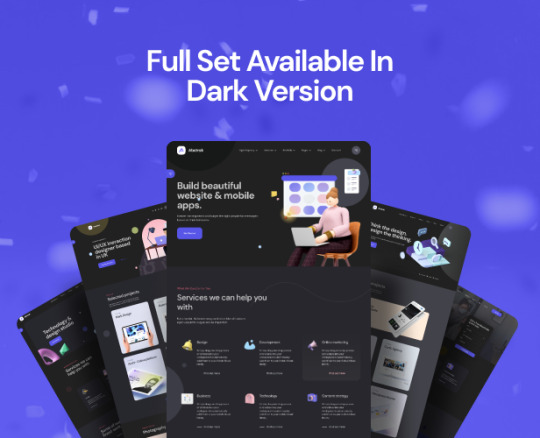
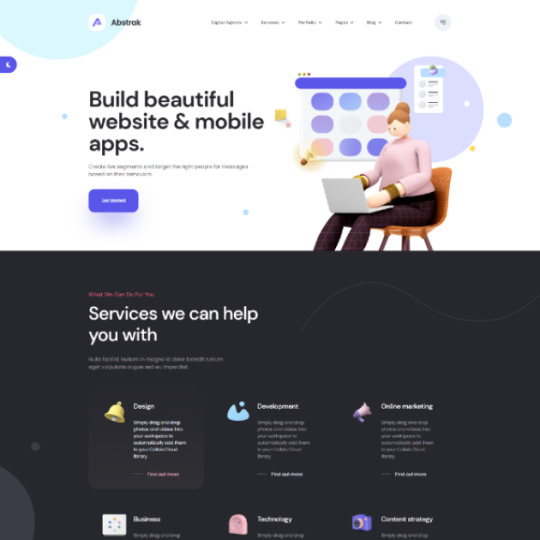
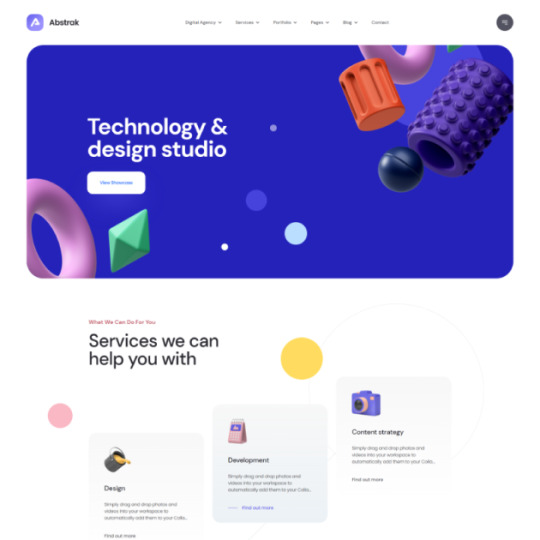
Creating a full-stack application involves developing both the frontend and backend components of the application. Here's a detailed process for building a full-stack application:
1. Define Requirements:
Clearly define the requirements and features of your application.
Identify the technologies and tools you'll use for the frontend and backend.
2. Design the Database:
Identify the data your application will handle.
Design the database schema and relationships.
Choose a database management system (e.g., MySQL, PostgreSQL, MongoDB).
3. Set Up Version Control:
Use a version control system like Git to track changes.
Create a repository for your project on platforms like GitHub or GitLab.
4. Frontend Development:
Choose a frontend framework or library (e.g., React, Angular, Vue.js).
Set up the project structure and build system.
Create UI components and layout.
Implement navigation and user interactions.
Integrate with backend APIs for data retrieval and manipulation.
5. Backend Development:
Choose a backend framework (e.g., Express.js, Django, Flask, Spring Boot).
Set up the server and define routes.
Implement authentication and authorization.
Develop controllers/handlers for API endpoints.
Connect to the database and perform CRUD operations.
Implement business logic.
6. API Development:
Design a RESTful or GraphQL API.
Implement endpoints for CRUD operations.
Include error handling and validation.
Secure API endpoints with appropriate authentication mechanisms.
7. Database Integration:
Connect your backend application to the database.
Implement data access methods.
Handle database migrations and updates.
8. Authentication and Authorization:
Implement user authentication (e.g., JWT, OAuth).
Set up user roles and permissions for authorization.
9. Testing:
Write unit tests for both frontend and backend components.
Perform integration testing to ensure different parts work together.
Conduct end-to-end testing for user flows.
10. Deployment:
Set up deployment environments (e.g., development, staging, production).
Deploy the frontend and backend to hosting platforms (e.g., Heroku, AWS, Azure, Netlify).
Configure domain and SSL certificates for secure connections.
11. Monitoring and Logging:
Implement logging for errors and important events.
Set up monitoring tools to track application performance.
Implement error tracking (e.g., Sentry, Rollbar).
12. Continuous Integration/Continuous Deployment (CI/CD):
Set up CI/CD pipelines for automated testing and deployment.
Ensure that changes are automatically tested before deployment.
13. Documentation:
Document the codebase, API, and any configuration.
Provide user documentation if applicable.
0 notes
Text
What’s new in Angular 9..?

For months now the Angular Development team had been waiting for the release for updates and new features in Angular. And finally, the wait is over as Angular 9.0.0 has been officially released. It has been a major release due to the changes to the ecosystem.
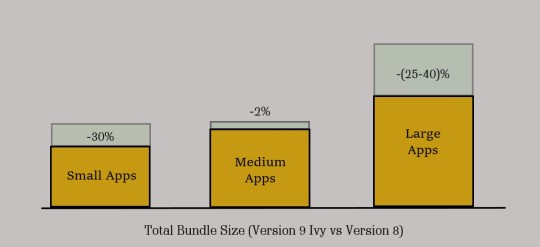
What’s new in Angular 9?
Below are the major aspects introduced in Angular 9:
Ivy Compiler
The outstanding change is the Ivy. Ivy is the default compiler and runtime with the release of Angular 9. Ivy has some gripping features like it improves the bundle size, adds improved type checking, allows for better debugging, agile testing, by default enables AOT compiler on and improves CSS class and style binding.
Smaller Bundles and Performance
The previous Angular versions had the problem of the filesize for the created JavaScript bundles i.e. app. The framework in Angular is much larger when compared to other libraries like React and Vue.js.
Though angular runtime is great, loading can take longer, you may not feel the difference while running. Ivy helps both small and large apps to improve bundle size savings which eliminate dead code.
Changes with Angular Forms
With this new angular version, there are some modifications in the form. Previously, < ngForm > was a valid selector that will no longer be used when An Angular form is referenced. Instead the < ng-form > can be used. You can now directly use the FormsModule. Instead of FormsModule.withConfig used previously.
Need for Faster Mobile Apps
In the era of smartphones, desktops contribute a very little percentage of the website traffic. Smartphones require more ‘mobile-friendly’ kinds of stuff by eliminating the downloadable resources for better user experience. To help out the Angular Developers in this scenario we have the Ivy engine that speeds up the application in multiple folds and enhances application load speed by reducing the size of Javascript classes.
Angular Component Updates
The components will not be imported via @angular / material in Angular 9. It uses secondary entrance points such as @angular/material/button.
i18n Improvements
Angular being a JavaScript platform has been embraced worldwide, and Angular CLI helps you to implement basic codes that are helpful in creating converter files in order to write applications in multiple languages. The Angular team further restructured the method on Ivy to make the implementation of compile-time inline easier.
Dependency Injection Changes in Core
There is slight improvisation for dependency injections in the new version of Angular. Though not a big change but support for the providedIn value section has been added.
@Injectable({ providedIn: ‘platform’ }) class MyService {…}
There have been an addition to the value library for the providedIn property like Platform-like scopes and any.
Features of Angular 9:
By default, Ivy is used for compilation.
The new version of TypeScript is available i.e. TypeScript 3.7.
AOT mode by default compiles the CLI apps.
Bazel: ts_library targets are supported for ng_package as entry-points.
tslib is listed as peer dependency and not as direct dependency.
ngtsc diagnostics are converted all to ts.Diagnostics.
ivy: new benchmark focusing on template creation is added.
ivy: add ngIf-like directive to the ng_template benchmark.
ivy: avoid native node retrieval from LView.
ivy: avoid repeated native node retrieval and patching.
ivy: avoid repeated tNode.initialInputs reads.
ivy: move local references into consts array, closes.
language-service: On TypeScriptHost it enable logging.
language-service: For invalid templateUrls it provides diagnostics.
language-service: For invalid styleUrls it provides diagnostics.
Some important facts about upgrading to Angular 9:
Updating to Angular 9 is automatic with ng update script if your application uses CLI:
npm install –no-save @angular/cli@^ 8.3.15
ng update @angular/cli @angular/core –next
Update your local ‘@angular/cli’ to version 8.3.15 or later 8.x version before updating for a better experience.
It is mandatory to include –next command line flag during the RC period.
It has been a long journey for the contributors! So, as of now, one journey has started, and another must begin. What will be Angular 10 like?
0 notes
Note
So you're smart, right? Well I would like to ask some questions about the mystical Little Planet.
How does its orbit work? (Does it orbit around the Sun or something else.)
How doesn't Little Planet get ripped apart by tidal forces when it reaches Mobius' Roche limit.
How big is Little Planet.
And finally (this is more of a personal question) What would you consider your favourite zone on Little Planet and would you take over it again if you had the chance?
This is currently a dead blog, last post was more than 10 whole years ago, but you know what? Those questions actually intrigued me, so I'll be answering them! Not everyone has the immense privilege to be taught to by an amazing genius like me, so pay attention!

It's currently difficult to determine Little Planet‘s orbit, since the location it warps to after it appears above Never Lake for a single month of the year is unknown. Everything points to the Time Stones warping the planet to another location, or even another plane of existence. While the Time Stones are known for warping time, they're also capable of warping space, same as the Chaos Emeralds. This is because of relativity - time is but another dimension of space, and not a separate property. It's possible that Little Planet, or Miracle Planet as its inhabitants call it, is a living, sentient organism itself, and may have warping capabilities of its own. This is why I wanted it as my base of operations - to harness that power means to have the most powerful flying fortress in the world! But anyhow, while Little Planet is above Mobius, it orbits the planet itself perfectly, always being perfectly above the center of Never Lake.

The gravity of Mobius doesn't affect Little Planet because of its own mysterious spacetime-warping properties. Simply put, Little Planet has a layer of spacetime distortion, like an atmosphere, that allows itself to not be easily penetrated by outside forces. To devise a chain that would link it to my mountain secret base and keep it in place was an incredible engineering feat!! The fact that it isn't affected by Mobius' gravity lends credibility to the theory that its temporary orbit over Never Lake is maintained not by gravitational pull, but by the planetoid's own motion, like it wants to be above Never Lake, for whatever reason. Its fauna and flora are similar enough to Mobius that it's likely that Mobius gave it life, with plant seeds being carried by the planet's breezes to it, and birds and other animals migrating to it in its distant past, or it could be that the Time Stones are connected to Mobius in some way. Anyhow, this layer of spacetime distortion that it has also manifests in its appearance - to outside observers, Little Planet is always seen as an image of its future self instead of its present self. Going through the spacetime distortion, you're thrown into Little Planet's past compared to how it appears outside the distortion. This is why it looked so metallic and futuristic once I conquered it with my machines!

The size of Little Planet is also difficult to measure because of its spacetime distortion. To an outside observer, it seems as though it is roughly 9 kilometers in diameter (5 and a half miles), but when you're standing on its surface, the ground does not have as tight of a curvature, indicating that it is likely much larger, although still incredibly small for any planet and even for most satellites in our system.
And of course, my favorite zone is Metallic Madness!! I despise all the bright nature all over this planet, with all of its hideous organic shapes! I much prefer to look at cold, metallic, angular, designed structures! And of course, it doesn't hurt that an incredible, handsome genius built it himself!! Gwahahahaa!!
18 notes
·
View notes
Text
STAYING OVER FOR THE LATE SET AT MEZZROW’S, 14 NOVEMBER 2024
JILL MCCARRON with Gianluca Renzi and Joe Strasser, 9 pm set
ACOIRIS SANDOVAL with Boris Kozlov and EJ Strickland, 10:30 pm set
Of course, the title is a contrivance, but it does capture an interest in two hard swinging pianist I was not familiar with. I gave up waiting for the Small’s Archive to post them (and indeed a big backlog of almost two weeks is now available just today), but these sets apparently didn’t warrant YouTube ads. So I was not perturbed.
While waiting for the sets to become available, I went to streams of their recordings and liked what I heard—creative and accessible pianists with flair.
JILL MCCARRON was slightly more straightahead, leaning into the standard repertoire in a very individual way. Walkin’ to open, but the slinky Art Pepper+11 arrangement. A Jobim from the middle of that vast book. Similarly, Horace Silver’s Route 608 and Chick Corea’s The One Step, Phineas Newborn, a gospelly blues, a tune for Russell Malone. She sang but beautifully but with a weak voice, not enough to sense even how it informed her playing. But her playing was very appealing in its strength and subtlety. Joe Strasser was as always reliable and helpful, in the pocket though there was an angularity to the Malone tribute tune. Gianluca Renzi was the find as his town was rich and prominent, always complementing what McCarron was about. She deserves a powerful bassist and she has one.
ACOIRIS SANDOVAL was equally sophisticated and grounded in the traditions. But on her own terms, Monk’s Pannonica to open that was clearly Monk but both oddly bright and full. Similarly, what made Shorter’s Footprints so appealing on the recording I heard is that it’s in 11/4 time which meant there was a lot going on. The ballad was JJ Johnson’s Lament and that deserves attention. Her tunes were Journey to Agartha (which George Cables has recorded for a new album and by her second solo I could hear what appealed to him about it); Spiral Into Oblivion (actually about sea turtle migration but her stage patter included honoring the recent deaths of Benny Golson, Lou Donaldson, and Roy Haynes but also the election); and an anti-Trump titled blues that swung hard was was no more programmatic than any blues. Still the point is that her tunes, musically and conceptually, reflect an active mind. Boris Kozlov grew in the mix, but he never reached the prominence of Renzi the set before. But EJ Strickland helped drive the tunes into creative places while respecting Mezzrow’s sensibilities.
I’m glad to discover these players and am glad I contrived to follow this real life juxtaposition.
0 notes
Text
Noteworthy PHP Development Tools that a PHP Developer should know in 2021!
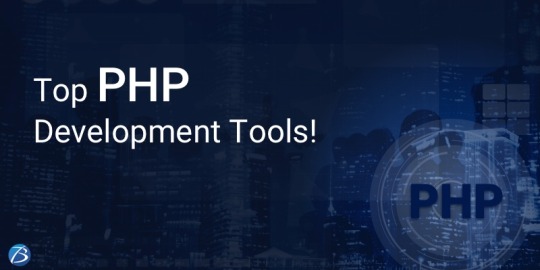
Hypertext Preprocessor, commonly known as PHP, happens to be one of the most widely used server-side scripting languages for developing web applications and websites. Renowned names like Facebook and WordPress are powered by PHP. The reasons for its popularity can be attributed to the following goodies PHP offers:
Open-source and easy-to-use
Comprehensive documentation
Multiple ready-to-use scripts
Strong community support
Well-supported frameworks
However, to leverage this technology to the fullest and simplify tasks, PHP developers utilize certain tools that enhance programming efficiency and minimize development errors. PHP development tools provide a conducive IDE (Integrated Development Environment) that enhances the productivity of PHP Website Development.
The market currently is overflooded with PHP tools. Therefore, it becomes immensely difficult for a PHP App Development Company to pick the perfect set of tools that will fulfill their project needs. This blog enlists the best PHP development tools along with their offerings. A quick read will help you to choose the most befitting tool for your PHP development project.
Top PHP Development tools
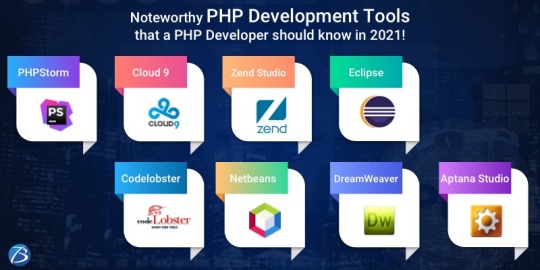
PHPStorm
PHPStorm, created and promoted by JetBrains, is one of the most standard IDEs for PHP developers. It is lightweight, smooth, and speedy. This tool works easily with popular PHP frameworks like Laravel, Symfony, Zend Framework, CakePHP, Yii, etc. as well as with contemporary Content Management Systems like WordPress, Drupal, and Magento. Besides PHP, this tool supports JavaScript, C, C#, Visual Basic and C++ languages; and platforms such as Linux, Windows, and Mac OS X. This enterprise-grade IDE charges a license price for specialized developers, but is offered for free to students and teachers so that they can start open-source projects. Tech giants like Wikipedia, Yahoo, Cisco, Salesforce, and Expedia possess PHPStorm IDE licenses.
Features:
Code-rearranging, code completion, zero-configuration, and debugging
Support for Native ZenCoding and extension with numerous other handy plugins such as the VimEditor.
Functions:
Provides live editing support for the leading front-end technologies like JavaScript, HTML5, CSS, TypeScript, Sass, CoffeeScript, Stylus, Less, etc.
It supports code refactoring, debugging, and unit testing
Enables PHP developers to integrate with version control systems, databases, remote deployment, composer, vagrant, rest clients, command-line tools, etc.
Coming to debugging, PHPStorm works with Xdebug and Zend Debugger locally as well as remotely.
Cloud 9
This open-source cloud IDE offers a development eco-system for PHP and numerous other programming languages like HTML5, JavaScript, C++, C, Python, etc. It supports platforms like Mac OS, Solaris, Linux, etc.
Features:
Code reformatting, real-time language analysis, and tabbed file management.
Availability of a wide range of themes
In-built image editor for cropping, rotating, and resizing images
An in-built terminal that allows one to view the command output from the server.
Integrated debugger for setting a breakpoint
Adjustable panels via drag and drop function
Support for keyboard shortcuts resulting in easy access
Functions:
With Cloud 9, one can write, run and debug the code using any browser. Developers can work from any location using a machine connected to the internet.
It facilitates the creation of serverless apps, allowing the tasks of defining resources, executing serverless applications, and remote debugging.
Its ability to pair programs and track all real-time inputs; enables one to share their development eco-system with peers.
Zend Studio
This commercial PHP IDE supports most of the latest PHP versions, specifically PHP 7, and platforms like Linux, Windows, and OS X. This tool boasts of an instinctive UI and provides most of the latest functionalities that are needed to quicken PHP web development. Zend Studio is being used by high-profile firms like BNP Paribas Credit Suisse, DHL, and Agilent Technologies.
Features:
Support for PHP 7 express migration and effortless integration with the Zend server
A sharp code editor supporting JavaScript, PHP, CSS, and HTML
Speedier performance while indexing, validating, and searching for the PHP code
Support for Git Flow, Docker, and the Eclipse plugin environment
Integration with Z-Ray
Debugging with Zend Debugger and Xdebug
Deployment sustenance including cloud support for Microsoft Azure and Amazon AWS.
Functions:
Enables developers to effortlessly organize the PHP app on more than one server.
Provides developers the flexibility to write and debug the code without having to spare additional effort or time for these tasks.
Provides support for mobile app development at the peak of live PHP applications and server system backend, for simplifying the task of harmonizing the current websites and web apps with mobile-based applications.
Eclipse
Eclipse is a cross-platform PHP editor and one of the top PHP development tools. It is a perfect pick for large-scale PHP projects. It supports multiple languages – C, C++, Ada, ABAP, COBOL, Haskell, Fortran, JavaScript, D, Julia, Java, NATURAL, Ruby, Python, Scheme, Groovy, Erlang, Clojure, Prolong, Lasso, Scala, etc. - and platforms like Linux, Windows, Solaris, and Mac OS.
Features:
It provides one with a ready-made code template and automatically validates the syntax.
It supports code refactoring – enhancing the code’s internal structure.
It enables remote project management
Functions:
Allows one to choose from a wide range of plugins, easing out the tasks of developing and simplifying the complex PHP code.
Helps in customizing and extending the IDE for fulfilling project requirements.
Supports GUI as well as non-GUI applications.
Codelobster
Codelobster is an Integrated Development Environment that eases out and modernizes the PHP development processes. Its users do not need to worry about remembering the names of functions, attributes, tags, and arguments; as these are enabled through auto-complete functions. It supports languages like PHP, JavaScript, HTML, and CSS and platforms such as Windows, Linux, Ubuntu, Fedora, Mac OS, Linux, and Mint. Additionally, it offers exceptional plugins that enable it to function smoothly with myriad technologies like Drupal, Joomla, Twig, JQuery, CodeIgniter, Symfony, Node.js, VueJS, AngularJS, Laravel, Magento, BackboneJS, CakePHP, EmberJS, Phalcon, and Yii.
Offerings:
It is an internal, free PHP debugger that enables validating the code locally.
It auto-detects the existing server settings followed by configuring the related files and allowing one to utilize the debugger.
It has the ability to highlight pairs of square brackets and helps in organizing files into the project.
This tool displays a popup list comprising variables and constants.
It allows one to hide code blocks that are presently not being used and to collapse the code for viewing it in detail.
Netbeans
Netbeans, packed with a rich set of features is quite popular in the realm of PHP Development Services. It supports several languages like English, Russian, Japanese, Portuguese, Brazilian, and simplified Chinese. Its recent version is lightweight and speedier, and specifically facilitates building PHP-based Web Applications with the most recent PHP versions. This tool is apt for large-scale web app development projects and works with most trending PHP frameworks such as Symfony2, Zend, FuelPHP, CakePHP, Smarty, and WordPress CMS. It supports PHP, HTML5, C, C++, and JavaScript languages and Windows, Linux, MacOS and Solaris platforms.
Features:
Getter and setter generation, quick fixes, code templates, hints, and refactoring.
Code folding and formatting; rectangular selection
Smart code completion and try/catch code completion
Syntax highlighter
DreamWeaver
This popular tool assists one in creating, publishing, and managing websites. A website developed using DreamWeaver can be deployed to any web server.
Offerings:
Ability to create dynamic websites that fits the screen sizes of different devices
Availability of ready-to-use layouts for website development and a built-in HTML validator for code validation.
Workspace customization capabilities
Aptana Studio
Aptana Studio is an open-source PHP development tool used to integrate with multiple client-side and server-side web technologies like PHP, CSS3, Python, RoR, HTML5, Ruby, etc. It is a high-performing and productive PHP IDE.
Features:
Supports the most recent HTML5 specifications
Collaborates with peers using actions like pull, push and merge
IDE customization and Git integration capabilities
The ability to set breakpoints, inspecting variables, and controlling the execution
Functions:
Eases out PHP app development by supporting the debuggers and CLI
Enables programmers to develop and test PHP apps within a single environment
Leverages the flexibilities of Eclipse and also possesses detailed information on the range of support for each element of the popular browsers.
Final Verdict:
I hope this blog has given you clear visibility of the popular PHP tools used for web development and will guide you through selecting the right set of tools for your upcoming project.
To know more about our other core technologies, refer to links below:
React Native App Development Company
Angular App Development Company
ROR App Development
#Php developers#PHP web Development Company#PHP Development Service#PHP based Web Application#PHP Website Development Services#PHP frameworks
1 note
·
View note
Photo










Monarch Butterfly
The monarch butterfly or simply monarch (Danaus plexippus) is a milkweed butterfly (subfamily Danainae) in the family Nymphalidae. Other common names, depending on region, include milkweed, common tiger, wanderer, and black veined brown. It may be the most familiar North American butterfly, and is considered an iconic pollinator species. Its wings feature an easily recognizable black, orange, and white pattern, with a wingspan of 8.9–10.2 cm (3 1⁄2–4 in) A Müllerian mimic, the viceroy butterfly, is similar in color and pattern, but is markedly smaller and has an extra black stripe across each hindwing.
The eastern North American monarch population is notable for its annual southward late-summer/autumn migration from the northern and central United States and southern Canada to Florida and Mexico. During the fall migration, monarchs cover thousands of miles, with a corresponding multi-generational return north. The western North American population of monarchs west of the Rocky Mountains often migrates to sites in southern California but has been found in overwintering Mexican sites as well. Monarchs have been bred on the International Space Station.
The monarch's wingspan ranges from 8.9 to 10.2 centimetres (3.5–4.0 in). The upper sides of the wings are tawny orange, the veins and margins are black, and there are two series of small white spots in the margins. Monarch forewings also have a few orange spots near their tips. Wing undersides are similar, but the tips of forewings and hindwings are yellow brown instead of tawny orange and the white spots are larger. The shape and color of the wings change at the beginning of the migration and appear redder and more elongated than later migrants. Wings size and shape differ between migratory and non-migratory monarchs. Monarchs from eastern North America have larger and more angular forewings than those in the western population. Monarchs are commonly and easily mistaken for the similar viceroy butterfly – the two species are Müllerian mimics.
Monarch flight has been described as "slow and sailing", with a flight speed estimated at approximately 9 km/h or 5.5 mph. For comparison, the average human jogs at a rate of 9.7–12.9 km/h (6–8 mph).
Adults are sexually dimorphic. Males are slightly larger than females and have a black patch or spot of androconial scales on each hindwing (in some butterflies, these patches disperse pheromones, but are not known to do so in monarchs). The male's black wing veins are lighter and narrower than those of females.
One variation, the "white monarch", observed in Australia, New Zealand, Indonesia and the United States, is called "nivosus" by lepidopterists. It is grayish white in all areas of its wings that are normally orange and is only about 1% or less of all monarchs, but populations as high as 10% exist on Oahu in Hawaii.
The monarch has six legs like all insects, but uses only its middle legs and hindlegs as the forelegs are vestigial, as in all Nymphalidae, and held against its body.
Source: Wikipedia
#purple loosestrife#flower#flora#nature#fauna#animal#insect#travel#vacation#Wolf Lake Memorial Park#Whiting#Indiana#USA#summer 2019#original photography#Great Lakes Region#Midwestern USA#close up#purple#tourist attraction#Monarch Butterfly#fragile beauy
9 notes
·
View notes
Text
Frown lines are the deep creases that you see when you knit your eyebrows
Furrow your brow, or wrinkle your nose. As you age, these deep creases form even if you are not making the face. This is because frown lines are the result of your facial muscles increasing the problem of wrinkling over time.
Frown lines are the most difficult to repair or prevent. However, you need not worry because there are many ways of preventing them or getting rid of them.
One popular procedure of fixing wrinkles and frown lines is botox. Botox is a drug that is injected by needle into the facial muscles causing the muscles to relax and in doing so it releases the wrinkles. However, if you are afraid of needles and are wary of the possible side effects of this product then you might want to consider these simple and practical means of preventing wrinkles.
One way is to watch yourself in front of the mirror when you talk to someone over the phone. Buy Azzalure® online You will see that as you speak you are making certain faces when you say certain things. Say for example, you are discussing some problems that need to be fixed and then you get tensed. You will see in the mirror that as you speak your lips may quirk and your brows may knit. These facial expressions cause those temporary folds over your forehead and in the skin of your mouth area.
These are expressions that you make every time you are tensed or stressed from family, work, and other things. Then you realize in time even if you are not doing it on purpose your face will show these expressions making your skin more vulnerable to wrinkles and frown lines.
You need to stop that bad facial habit now! You make these facial expressions when you are concentrating on a job or while interacting with family, friends or co-workers. Learn to focus on keeping your face smooth and worry-free, even if don't feel like it. This way you are able to keep yourself from spending the whole day reinforcing those frown lines.
For the regular wrinkles and frown lines on your face there are a variety of anti-aging products available to suit your needs, be it prevention or repair. You can choose from a number of tested and proven facial masks, eye serums and other beauty products that are designed to relax stressed facial muscles and erase or remedy frown lines.
1. Recovery takes time-Set aside realistic healing time after your procedure.Impatience will only lead to complications.
2. Subtle,gradual changes will make you more happier than dramatic ones. Subtle changes will help make you look more refreshed and youthful, rather than a dramatic change that will alter your appearance.
3. Restylane erases wrinkles in men as well as women.
4. Restylane is the NEW botox! Most top doctors highly recommend restylane as a dermal filler. Restylane is a naturally occurring chemical in the body and is NOT poisonous as botox is proving to be in more studies.
5. Chemical/TCA peels, performed without general anesthesia, is not a typical facial and can get rid of fine lines, uneven skintone,blotchiness and even smooth crows feet!
5. TCA peels are quickly becoming the peel standard. A solution of 20% to begin with is excellent for rejuvenating the skin,revealing fresh,healthy glowing skin.
6. You can now get easy to use, at-home TCA peels online.As long as you buy from a reputable vendor,you can save hundreds of dollars with these kits.If you would like a quality recommendation for TCA peels, email me.
7. TCA peels are an excellent choice for smoothing acne scars.
8. Facelifts often make men look more feminized.A better option to the standard face lift would be a neck life,brow lift and blepharoplasty(upper and under eye surgery).
9. Reshaping procedures will give you better results than lifting.This will give a more chiseled/angular and masculine look.
10. Liposuction cannot give you 6-pack abs, but it can bring you closer to where you were in college.Proper diet and exercise AFTER the procedure is KEY to maintaining and molding perfect abs.
11. Liposuction does NOT replace working out, but it can surely remove fat from unwanted areas that typical exercise tend to miss,such as the chest(man boobies) and love handles.
12. Lipo results will be best if you continue regular workouts at the gym after the procedure(after healing of course).
13. Calf and Pec implants do tend to migrate or shift position with time and other problems can also arise. It's best to use liposuction to sculpt around the surrounding areas and make the calfs and pecs appear more stronger and distinct.
1 note
·
View note
Photo

React Native End-to-end Testing and Automation with Detox
Detox is an end-to-end testing and automation framework that runs on a device or a simulator, just like an actual end user.
Software development demands fast responses to user and/or market needs. This fast development cycle can result (sooner or later) in parts of a project being broken, especially when the project grows so large. Developers get overwhelmed with all the technical complexities of the project, and even the business people start to find it hard to keep track of all scenarios the product caters for.
In this scenario, there’s a need for software to keep on top of the project and allow us to deploy with confidence. But why end-to-end testing? Aren’t unit testing and integration testing enough? And why bother with the complexity that comes with end-to-end testing?
First of all, the complexity issue has been tackled by most of the end-to-end frameworks, to the extent that some tools (whether free, paid or limited) allow us to record the test as a user, then replay it and generate the necessary code. Of course, that doesn’t cover the full range of scenarios that you’d be able to address programmatically, but it’s still a very handy feature.
Want to learn React Native from the ground up? This article is an extract from our Premium library. Get an entire collection of React Native books covering fundamentals, projects, tips and tools & more with SitePoint Premium. Join now for just $9/month.
End-to-end Integration and Unit Testing
End-to-end testing versus integration testing versus unit testing: I always find the word “versus” drives people to take camps — as if it’s a war between good and evil. That drives us to take camps instead of learning from each other and understanding the why instead of the how. The examples are countless: Angular versus React, React versus Angular versus Vue, and even more, React versus Angular versus Vue versus Svelte. Each camp trash talks the other.
jQuery made me a better developer by taking advantage of the facade pattern $('') to tame the wild DOM beast and keep my mind on the task at hand. Angular made me a better developer by taking advantage of componentizing the reusable parts into directives that can be composed (v1). React made me a better developer by taking advantage of functional programming, immutability, identity reference comparison, and the level of composability that I don’t find in other frameworks. Vue made me a better developer by taking advantage of reactive programming and the push model. I could go on and on, but I’m just trying to demonstrate the point that we need to concentrate more on the why: why this tool was created in the first place, what problems it solves, and whether there are other ways of solving the same problems.
As You Go Up, You Gain More Confidence
As you go more on the spectrum of simulating the user journey, you have to do more work to simulate the user interaction with the product. But on the other hand, you get the most confidence because you’re testing the real product that the user interacts with. So, you catch all the issues—whether it’s a styling issue that could cause a whole section or a whole interaction process to be invisible or non interactive, a content issue, a UI issue, an API issue, a server issue, or a database issue. You get all of this covered, which gives you the most confidence.
Why Detox?
We discussed the benefit of end-to-end testing to begin with and its value in providing the most confidence when deploying new features or fixing issues. But why Detox in particular? At the time of writing, it’s the most popular library for end-to-end testing in React Native and the one that has the most active community. On top of that, it’s the one React Native recommends in its documentation.
The Detox testing philosophy is “gray-box testing”. Gray-box testing is testing where the framework knows about the internals of the product it’s testing.In other words, it knows it’s in React Native and knows how to start up the application as a child of the Detox process and how to reload it if needed after each test. So each test result is independent of the others.
Prerequisites
macOS High Sierra 10.13 or above
Xcode 10.1 or above
Homebrew:
/usr/bin/ruby -e "$(curl -fsSL https://raw.githubusercontent.com/Homebrew/install/master/install)"
Node 8.3.0 or above:
brew update && brew install node
Apple Simulator Utilities: brew tap wix/brew and brew install applesimutils
Detox CLI 10.0.7 or above:
npm install -g detox-cli
See the Result in Action
First, let’s clone a very interesting open-source React Native project for the sake of learning, then add Detox to it:
git clone https://github.com/ahmedam55/movie-swiper-detox-testing.git cd movie-swiper-detox-testing npm install react-native run-ios
Create an account on The Movie DB website to be able to test all the application scenarios. Then add your username and password in .env file with usernamePlaceholder and passwordPlaceholder respectively:
isTesting=true username=usernamePlaceholder password=passwordPlaceholder
After that, you can now run the tests:
detox test
Note that I had to fork this repo from the original one as there were a lot of breaking changes between detox-cli, detox, and the project libraries. Use the following steps as a basis for what to do:
Migrate it completely to latest React Native project.
Update all the libraries to fix issues faced by Detox when testing.
Toggle animations and infinite timers if the environment is testing.
Add the test suite package.
Setup for New Projects
Add Detox to Our Dependencies
Go to your project’s root directory and add Detox:
npm install detox --save-dev
Configure Detox
Open the package.json file and add the following right after the project name config. Be sure to replace movieSwiper in the iOS config with the name of your app. Here we’re telling Detox where to find the binary app and the command to build it. (This is optional. We can always execute react-native run-ios instead.) Also choose which type of simulator: ios.simulator, ios.none, android.emulator, or android.attached. And choose which device to test on:
{ "name": "movie-swiper-detox-testing", // add these: "detox": { "configurations": { "ios.sim.debug": { "binaryPath": "ios/build/movieSwiper/Build/Products/Debug-iphonesimulator/movieSwiper.app", "build": "xcodebuild -project ios/movieSwiper.xcodeproj -scheme movieSwiper -configuration Debug -sdk iphonesimulator -derivedDataPath ios/build", "type": "ios.simulator", "name": "iPhone 7 Plus" } } } }
Here’s a breakdown of what the config above does:
Execute react-native run-ios to create the binary app.
Search for the binary app at the root of the project: find . -name "*.app".
Put the result in the build directory.
Before firing up the test suite, make sure the device name you specified is available (for example, iPhone 7). You can do that from the terminal by executing the following:
xcrun simctl list
Here’s what it looks like:
Now that weve added Detox to our project and told it which simulator to start the application with, we need a test runner to manage the assertions and the reporting—whether it’s on the terminal or otherwise.
Detox supports both Jest and Mocha. We’ll go with Jest, as it has bigger community and bigger feature set. In addition to that, it supports parallel test execution, which could be handy to speed up the end-to-end tests as they grow in number.
Adding Jest to Dev Dependencies
Execute the following to install Jest:
npm install jest jest-cli --save-dev
The post React Native End-to-end Testing and Automation with Detox appeared first on SitePoint.
by Ahmed Mahmoud via SitePoint https://ift.tt/2JTJWxK
1 note
·
View note